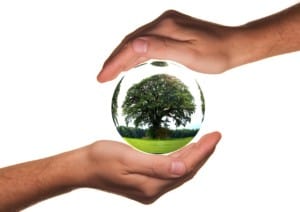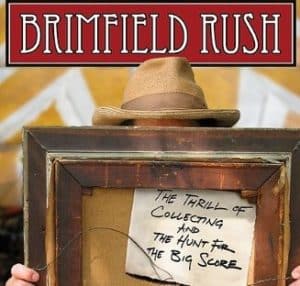 I recently read a remarkable book. Actually, it was an audiobook narrated by the author, and once I began, I found it hard to stop. While not all narrators are created equally, I can confirm that this one is delightful; the soothing cadence of her voice is like a lullaby for the soul.
I recently read a remarkable book. Actually, it was an audiobook narrated by the author, and once I began, I found it hard to stop. While not all narrators are created equally, I can confirm that this one is delightful; the soothing cadence of her voice is like a lullaby for the soul.
Robin Wall Kimmerer’s Braiding Sweetgrass should be required reading. I mention this to everyone I’ve told about the book, and nobody asks for whom it should be required. Maybe they assume I mean school children. I actually mean it should be required reading for anyone who wants to live on the planet. Hyperbole? Probably. Yet perhaps a universal playbook is just what we need to heal the fragile ecology of our world.
The author is both a botanist and a member of the Citizen Potawatomi Nation, so her writing encompasses the dual lenses of science and indigenous wisdom. This book opens with a short retelling of the legend of Skywoman, an origin story of how the first people came to inhabit this world when one of them falls from the sky. Importantly, her survival is possible only through the cooperation of the creatures already here. Then, a reciprocal relationship is established when Skywoman cultivates seeds she brought with her. Soon plants and trees spread everywhere, providing an abundance of food for everyone. This story establishes the major theme of the book: that it is through reciprocity between people and the natural world and all its inhabitants that we can seek ecological sustainability. When Skywoman arrives here she is pregnant; caring for the plants of the land isn’t just for her own survival but for the future of her descendants. So there’s a lesson, here, about thinking beyond our own lifespan with respect to our environment. Surely this is a philosophy worth spreading.
At the same time, the author observes an interesting point: that Skywoman, the original woman, was an immigrant. She allows that some of her ancestors are Skywoman’s people while some of her ancestors are the newer kind of immigrant. The idea of all of us sharing the label of immigrant might prove too provocative for some, but in this divisive age it is a generous and encompassing idea, one that invites unity instead of discord. It also invites connections between past, present and future.
Another idea explored by the author is that of a gift economy versus one of commodity. She notes that unlike purchases, which conclude with the parity of payment, gifts create an ongoing relationship. A hand-knit pair of socks from a relative might require a note of thanks and, for instance, and wearing them during the next visit (even if you don’t like them) plus making a gift in return. Some gifts cannot be bought, as with ceremonial sweetgrass. Kimmerer tells of a friend who uses it for ceremonial purposes and although he is kept supplied by people, he may run out at larger gatherings. He would then have go to vendors and ask them for it; it can’t be bought or sold and still retain its essence for the ceremony. The relationships created by a gift economy adds a level of responsibility to each other that is absent from the equation of goods bought and sold. Although we live in a market economy, Kimmerer’s message is clear: to a certain extent, we make the choice to participate or not. She notes, for instance, that water is a gift not meant to be bought or sold, and we can choose not to buy it.
Kimmerer has a talent for storytelling and she is nimble in weaving together different accounts into a cohesive narrative. Her writing flows seamlessly between tales from her own personal and professional life to the larger histories of the indigenous people of America and the environment. Both of the latter subjects necessarily address mistreatment on a massive scale, which she is somehow able to tackle without making one feel overwhelmed and hopeless. All of the stories are connected as, she would say, we are all connected. One delightful example of her skill as a writer begins with the tale of an unproductive fishing expedition made by her grandfather one evening in September of 1895 that turns into his discovery of windfall of pecans. With nothing to carry them in, he doffs his pants, ties the leg holes with twine and brings home an impressive haul, despite the lack of fish. This anecdote flows into the origin of the word pecan, requiring a brief recounting of how her ancestors were forcibly removed from their lands three times in one generation. In their travels they encountered a grove of nut trees of a variety unknown to them, and simply called them nuts, or “pigan” which became “pecan” in English. Kimmerer then deftly steers the narrative to botany by noting that nut trees don’t produce a crop every year but rather follow a boom and bust cycle called mast fruiting. She explains that concept and hypotheses about what causes this cycle but also notes that it happens to trees as a group, not individually. Then, in the blink of an eye, she carries the idea of the seeming solidarity of these trees back to the sad history of how her people were divided and conquered by the offer of owning property as individuals, when they might have taken a lesson from the pecans and remained united.
This is but one example of many wonderful story webs spun out in Kimmerer’s book. Her lyrical language is the spoonful of sugar that helps the science go down, for those concerned about that aspect of the book. Her writing is also peppered with references to everyone from Lewis Hyde to E.O. Wilson. If you’re looking to branch out, numerous books from both of those authors are available in the Minuteman Library Network including E.O Wilson’s The Origins of Creativity.
Kirstie David is the Literacy/Outreach Librarian at the Morrill Memorial Library in Norwood, MA. Look for her article in the March 26, 2020 issue of the Transcript and Bulletin.




